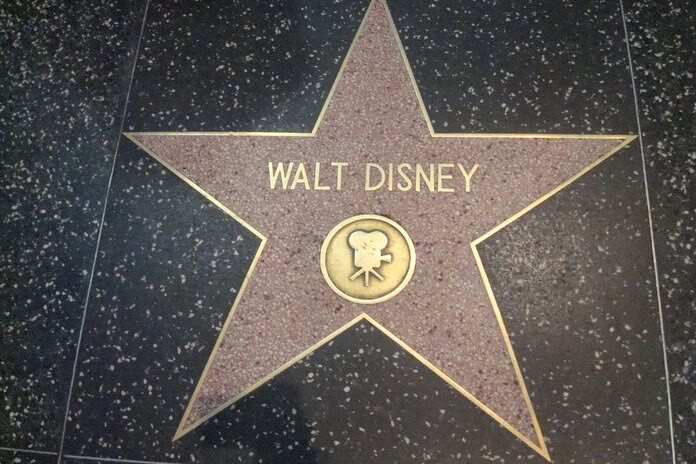Disney Stock
The Walt Disney Company’s(NYSE:DIS) new CEO is Bob Iger. But the fact that the previous CEO was fired for any reason shows that this company has had trouble with succession for a long time. Companies must be able to handle transitions, or when the CEO finally can’t do the job anymore, there will almost certainly be years off, at best, muddling along, which could be much worse. Disney stock is down nearly 40% year-to-date.
Worryingly, employees went to the board without former CEO Bob Chapek, where they were greeted warmly. This isn’t good for any CEO because it gives the impression that the old CEO never left or that the new CEO will always be questioned. Things take “forever” to get done because it seems like the company has an appeals court. It would have been better for the board to run things directly instead of spending so much time going in circles.
This also shows how often decisions at the top are made by getting everyone on the same page. So, one of the CEO’s jobs is to ensure everyone is on the same page before making a formal strategic move. Replacing someone with Bob Iger’s reputation was going to take a lot of work. However, the board should have planned for a gradual transition rather than a sudden retirement, which appears to have never occurred.
The majority of people dislike change. Still, a new CEO usually wants to make his mark on a company. In this case, though, the employees were ready with a board that would stop any change, which helped them keep things the same. This was probably made worse because Bob Chapek needed to get everyone to agree on the company’s direction.
Even CEOs with a lot of experience needed help getting through the fiscal year 2020 because of the coronavirus demand destruction problems. Many businesses were probably used to making mistakes. The difference was that the former CEO, Bob Iger, had a lot of experience and was able to second-guess everything the new CEO did. This stopped the company from making progress and caused a lot of uncertainty when the markets it served were changing quickly.
Streaming
Some of the blame has been put on stream in the news. Still, Disney, like many of its competitors, started from scratch and built a business in a few years. Netflix (NASDAQ:NFLX) took a lot longer to grow its business; at first, it lost money and made only small profits.
The losses are the focus of the media. Instead, what should matter is the strategy and whether or not it is time for management to switch from growth to making money. When it became clear that the streaming channel would be big enough to matter, most of the industry decided to join. That often happens (for more information, read “Competitive Strategies” by Michael Porter).
The switch from growth to media is primarily a random event that can be discussed. It isn’t the only reason why a CEO leaves on their own.
There has been a lot of pointing the finger at the “Direct-to-Consumer” loss during the fiscal year, and then people jumped to the conclusion that the loss caused the CEO change. But people’s problems are the cause of (by far) most changes in staff. So, it’s doubtful that the above-mentioned loss caused the CEO change.
Also, Disney executives have been saying for a while on conference calls that they aim to make money in the future. When Disney wants to change its strategic direction, it takes time. Most of the time, this change takes years to happen. The growth plan that led to the above losses was decided on years ago. It would be normal if it took three years (as discussed below). Long-term planning would have been needed to know that the losses would be as significant as they turned out to be and to figure out what to do about it. That will be hard, if not impossible, for many managers to do. Large companies have a weakness in that they have to plan for the future before they know what will happen.
WBD’s management brought up or alluded to the fact that the most recent acquisitions resulted from decisions made a few (maybe three) years ago. For most of the fiscal year, Disney has said that its goal is to make money from streaming. But this doesn’t mean that the losses will “turn around on a dime,” as most market participants seem to think. Instead, those losses happened because management chose to put business growth first.
A Brief History of Netflix
Netflix went public in 2002. At the time, the company’s value on the stock market was in the hundreds of millions of dollars. On the other hand, a company like Disney, Amazon (NASDAQ:AMZN), or what is now Warner Bros Discovery, will usually become interested in what was to become streaming if they see a billion-dollar opportunity with enough profits.
Since going public, the business has always shown a profit. The main problem with the company model has been the cash flow.
The market value of this company is more than $100 billion. Still, given the company’s market value, cash flow in a year with little or no growth in subscribers has been almost non-existent.
Disney thinks it’s good to have franchises that can be turned into TV shows, prequels, and sequels. There are also clothing lines and other ways to make money, like selling DVDs (and rentals). But Disney has a much easier time making consistent hits than a new company like Netflix, which doesn’t have a catalog of similar shows.
More importantly, those who went to business school “know” that reported profits plus depreciation are a quick way to estimate cash flow (roughly before changes in accounts). This is a sign of allowed but aggressive accounting when profits are higher than cash flow without much growth. This could mean that the depreciation charge needs to be changed for a much more realistic view of profits. This is especially important if it keeps happening. It’s a red flag for accountants and investors who want to ensure the business is run conservatively. Compared to profits, the lack of cash flow from operating activities calls management’s long-promised profit advantage into question. This should be thoroughly looked into because things should be going better.
Most investors don’t know that when it comes to accounting for reporting, management has a lot of choices. GAAP often allows for more than one choice. Auditors can’t really question how long a show will last when there is an industry pioneer. So, in the end, it is up to investors to decide if the decisions made by management that allow profit reporting is valid. Mr. Market often looks at his profits instead of his cash flow statements. True disruptors, like Apple (NASDAQ:AAPL) when Steve Jobs ran it, made a lot of cash flow in addition to their reported profits.
So, Disney wants to quickly grow its market share and turn that market share into money. But it will only do that if it thinks it has a good chance of making money in that market sector. Most of the time, there needs to be a good chance of making at least $1 billion in sales for the profit percentage management has planned. Disney followed a well-trodden path by quickly growing to get a bigger market share, which it will now turn into money. This is something that a lot of large companies do.
Netflix is now making it clear where big competitors could come in and make money. But when new competitors enter the market, they will want to make a lot more money than what is shown above.
Disney can do this with movies that have been paid for for a long time and are on the books at zero. This gives them a big advantage in terms of cost. These movies or streaming shows can also bring in money for the company in other ways. So, the “Direct-to-Consumer” division’s previous losses might not have to be completely erased for the company to make more money at a good enough rate to make streaming a welcome addition. This is called “incremental accounting,” and it is seldom if ever, made public.
Disney and Warner Bros. Discovery have other ways to make money that Netflix doesn’t have. (It’s important to note that Amazon and Apple are in the middle; they have some different types of businesses, but only a few as Disney.)
What’s Coming Up
Disney is having trouble with the change of CEO, which is now Bob Iger’s top priority. The previous CEO tried to change too many things without first getting the support of senior management and, most likely, the board of directors. As a result, he lost vital support, which led to his being fired.
But Bob Iger will work on making up for that mistake in the future. If he can’t keep being CEO, it is essential to have someone who can do a good job in his place.
Most employees leave their jobs because of people, not because of how well they do their jobs. So, this problem needs to be fixed, so the next CEO doesn’t fail.
That means that most people were wrong when they said the CEO change was due to losses in the “Direct-to-Consumer” division. Most likely, the decision to grow the division was made years ago and was already well underway before the CEO changed.
In the same way, the statement about making money in the streaming business was likely made long before management said that was their goal. But the streaming business is big enough that it doesn’t “change on a dime,” so putting together a strategy to make money probably took some time.
It’s common for companies like Disney to wait for an industry leader like Netflix to build it up enough so that competing is worth it. Large competitors often “jump in” by getting a big market share and then making money off that share. So far, Disney is following that script, just like many companies before them in many different fields.
So, the new CEO has to finish what the old one probably started. During this time, he has to find a good replacement for Bob Iger, who can’t “return forever.” In the same way, the board and senior management must be able to support the new CEO and not work against him or her (as appears to have been the case). They should realize that the company will need a new CEO sooner or later.
Featured Image: Pixabay @ janeb13















